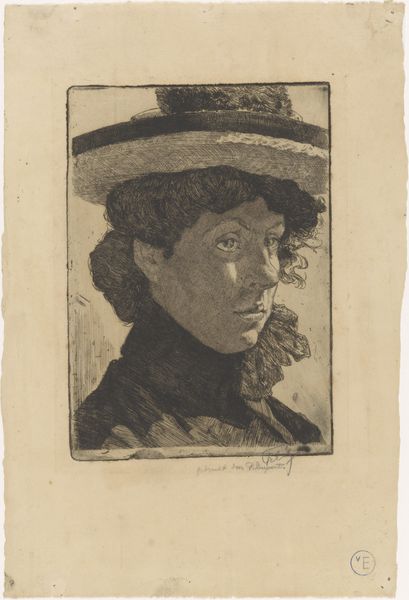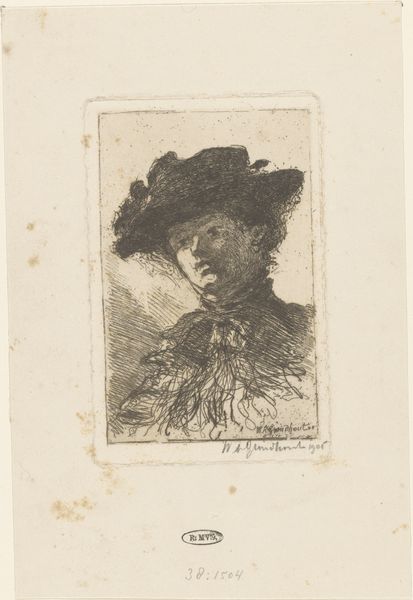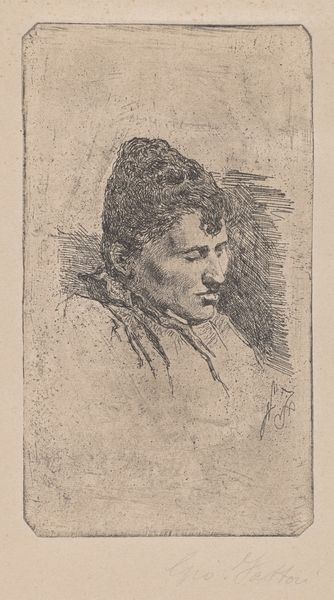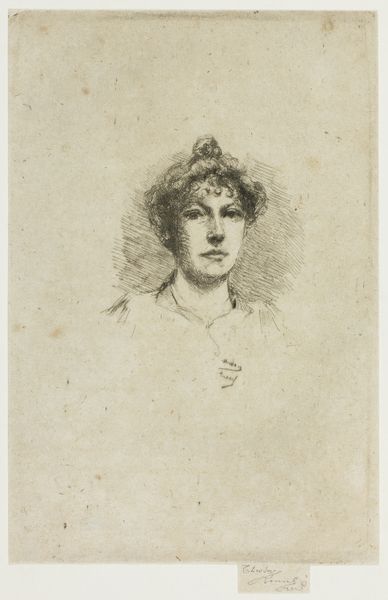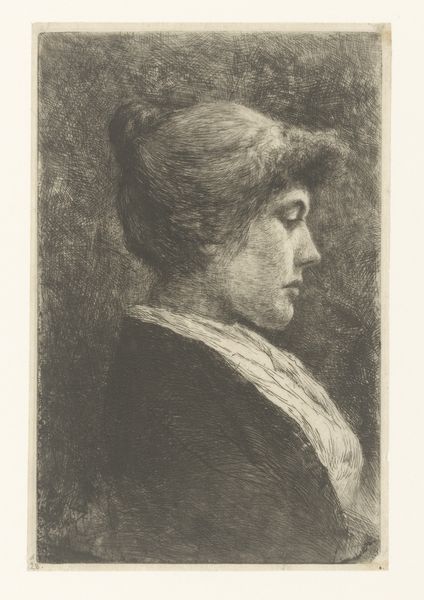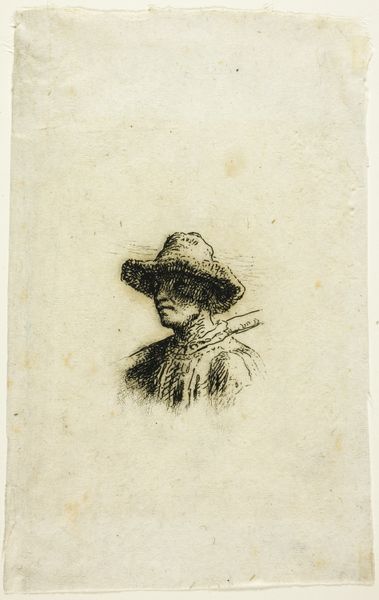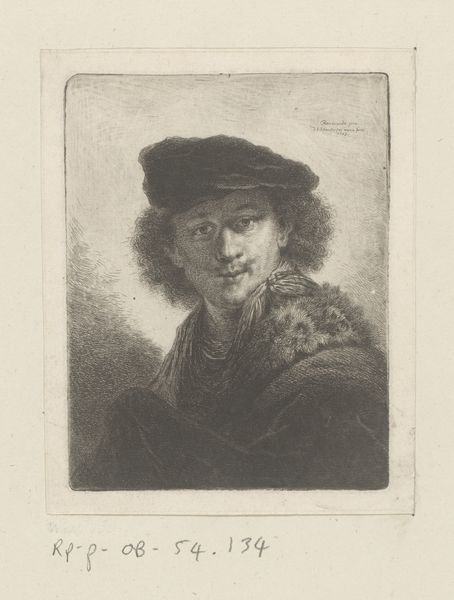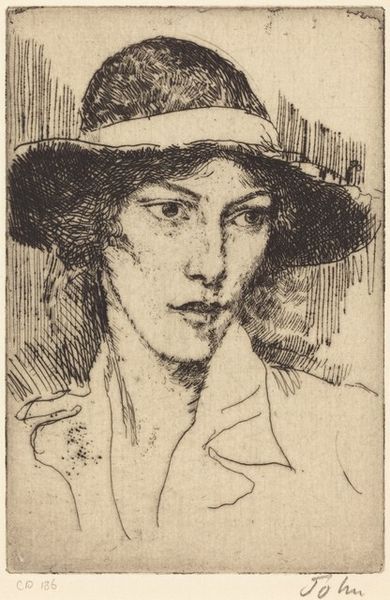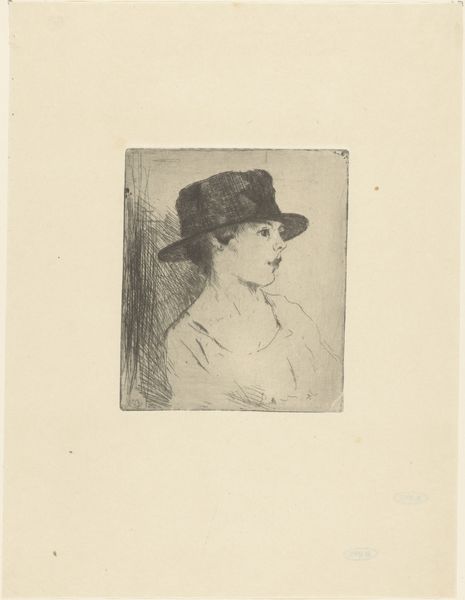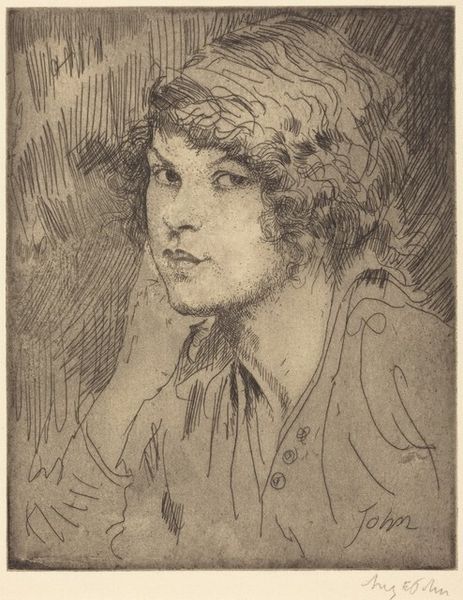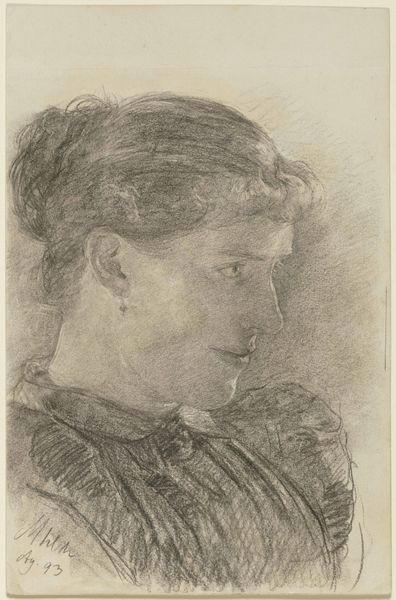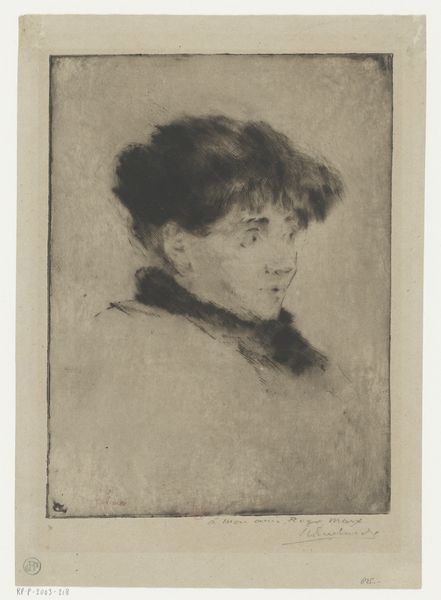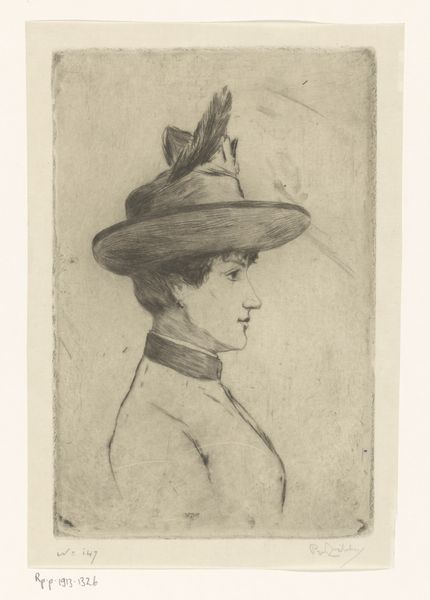
drawing, graphite
#
portrait
#
pencil drawn
#
drawing
#
pencil sketch
#
pencil drawing
#
graphite
#
realism
Dimensions: height 110 mm, width 92 mm
Copyright: Rijks Museum: Open Domain
Curator: Standing before us is "Portret van een onbekende vrouw," a drawing created by Willem Adrianus Grondhout sometime between 1888 and 1934. It's crafted with graphite on paper. Editor: My immediate impression is of fragility. The sketch-like quality gives the woman a transient, almost ghostly presence. It's quite striking how little definition there is, yet her expression feels very palpable. Curator: Precisely. The ambiguity is central, especially considering the artist and the time period. Grondhout was working during a time of intense social change, including shifting views of women's roles and representation in public life. The lack of definitive features and known identity might challenge conventional portraiture’s purpose to memorialize and enshrine particular elites. Editor: It certainly feels like a conscious rejection of that tradition. What can we glean from the materials used? The reliance on pencil rather than paint lends itself to this very ethereal effect. Curator: Graphite lends itself to quick, immediate marks, ideal for capturing fleeting impressions. Think of the tradition of portrait miniatures – prized by middle and upper classes - being sidelined by newer approaches which seek to capture a 'feeling' instead. Editor: I think there's a distinct quietness and modesty here as well. No bright colours, grand setting, or ornate clothing to distract us. How does the "unknown woman" title shape our reading? Does it broaden its application? Does it suggest perhaps ANY woman can be depicted this way? Curator: The anonymity absolutely opens up possibilities. It asks us to consider what narratives might otherwise be erased. An art historian like T.J. Clark speaks about the need to think from those historical figures excluded or marginalized. In our contemporary climate that focus allows for an intersectional feminist approach. Editor: It prompts reflections about who gets remembered and who gets overlooked. Art's historical gatekeepers are clearly at play when you are left with little trace beyond a sensitively realised graphite sketch. It does spark questions about gender, representation, and whose stories matter within the broader cultural record. Curator: Yes, ultimately, this work, precisely because of its supposed simplicity, invites layers of deeper inquiry. It is always refreshing to challenge one's reading with the understanding that portraits aren't always clearcut in representing their subjects. Editor: I agree entirely. It’s fascinating how such a subtle sketch can evoke so much. Thank you.
Comments
No comments
Be the first to comment and join the conversation on the ultimate creative platform.
